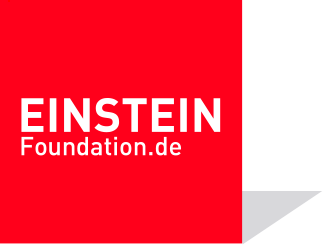Hélène Esnault is professor for Algebra and Number Theory at the Departement of Arithmetic Geometry of the Freie Universität Berlin. During the last years more and more mathematicians used new methods leaving traditional fields of mathematics behind in order to obtain new findings. With her research Hélène Esnault actively promotes this approach within Diophantine mathematics.
»Searching for the light«
I see the world in terms of fog and light. When we are in a fog, we cannot see forms and we are colour-blind. Once the fog starts to lift, we can discern certain objects, light, and colours. For me, mathematics is this light. When we do research, which involves a series of reflections to solve a problem, we need to see clearly. It’s my job to create this light.
We have some major conjectures in mathematics, but nobody has a clue about how to prove them. Imagine standing in an incredibly dense forest, where the strongest beam of light can shine for just two metres, and you believe there is something worthwhile on the outskirts. To get there, you would develop a strategy: maybe it would be to turn right, knock down a few trees, and then zigzag to the left. Others would argue: just go left. Entire generations of mathemat- icians develop new theories for new paths, but many are dead ends. It is a rare thing to actually prove an initial hunch. Sometimes you think you are on the right path, but then you come up against an obstacle. Sometimes it even springs up in the night, in the middle of a dream. That’s when you know that you are onto something.
My area of research, algebraic arithmetic geometry, is a very abstract field of mathematics. It is at the centre of various sub-disciplines such as arithmetics, differential geom- etry, or topology. I try to understand problems that span these boundaries. For example, there used to be a long-standing question in arithmetics, or in other words number theory. I had an image in my head that came from geometry; basically a “foreign” concept. As it turns out, I was able to translate it, once I understood the analogy between the image in geometry and the arithmetical problem I was trying to solve. The image simply provided a clear answer to my conjecture. Dovetailing these two ideas was a serendipitous moment for mathematics.
My work and my results belong to the category of basic research. Maybe someday, someone will apply them in fifty years or so, but that still has not happened. My motivation lies in the inherent dynamics of mathematics and in abstraction. Mathematics is the embodiment of abstraction. I just need a writing utensil for my work, sometimes not even that. Ultimately, it all happens in my mind. I could be at a concert and suddenly no longer able to concentrate on the music because I need to pursue an idea. You might liken it to a poet who suddenly finds a phrase so captivating that everything else becomes secondary.


